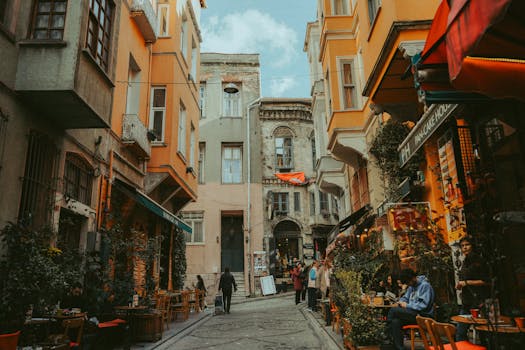
Traveling Through Time: How Europe’s Historical Heritage Shapes Modern Lifestyles in 2025
Traveling Through Time: How Europe’s Historical Heritage Shapes Modern Lifestyles in 2025. Europe, a continent steeped in history and tradition, has a unique ability to blend its rich heritage with modern lifestyles. From the ancient ruins of Greece and Rome to the vibrant cities of Paris and London, Europe’s historical landmarks and cultural traditions continue to shape the way people live, work, and travel. In this article, we’ll explore the ways in which Europe’s historical heritage influences modern lifestyles and highlight some of the most fascinating destinations to visit in 2025.
Architectural Legacy
Europe’s architectural landscape is a testament to its rich history, with landmarks like the Eiffel Tower, Big Ben, and the Colosseum drawing millions of visitors each year. These iconic structures not only reflect the engineering and artistic prowess of their time but also continue to inspire modern architects and designers. The blend of old and new is evident in cities like Barcelona, where Antoni Gaudí’s Sagrada Família stands alongside modern skyscrapers, and in Berlin, where the Berlin Wall Memorial serves as a poignant reminder of the city’s turbulent past.
Culinary Traditions
European cuisine is renowned for its diversity and richness, with each country boasting its own unique flavors, ingredients, and cooking techniques. From the pasta dishes of Italy to the seafood stews of Portugal, traditional cuisine plays a significant role in shaping modern lifestyles. The emphasis on local, seasonal produce and artisanal products has led to a resurgence in farm-to-table restaurants, food festivals, and culinary tours. Visitors can sample the famous tapas of Spain, indulge in the rich chocolates of Belgium, or savor the exquisite pastries of France, all while exploring the historical context behind these beloved dishes.
Cultural Festivals and Events
Europe’s cultural festivals and events are an integral part of its historical heritage, with many celebrations dating back centuries. The Tomatina tomato-throwing festival in Spain, the Carnival of Venice, and the Oktoberfest beer festival in Germany are just a few examples of the vibrant events that draw visitors from around the world. These festivals not only showcase local traditions and customs but also provide a unique opportunity for cultural exchange and community building. In 2025, travelers can look forward to attending the Edinburgh Festival Fringe, the largest arts festival in the world, or experiencing the magical atmosphere of the Christmas markets in Vienna and Prague.
Modern Interpretations
While Europe’s historical heritage is undeniably significant, it’s also exciting to see how modern artists, designers, and innovators are reinterpreting traditional themes and motifs. From the street art of Berlin to the fashion designs of Milan, contemporary creativity is thriving across the continent. The use of cutting-edge technology, such as virtual reality and 3D printing, is also transforming the way we experience and interact with historical sites and cultural artifacts. In 2025, visitors can expect to encounter innovative exhibitions, performances, and installations that blend the old with the new, pushing the boundaries of artistic expression and cultural storytelling.





